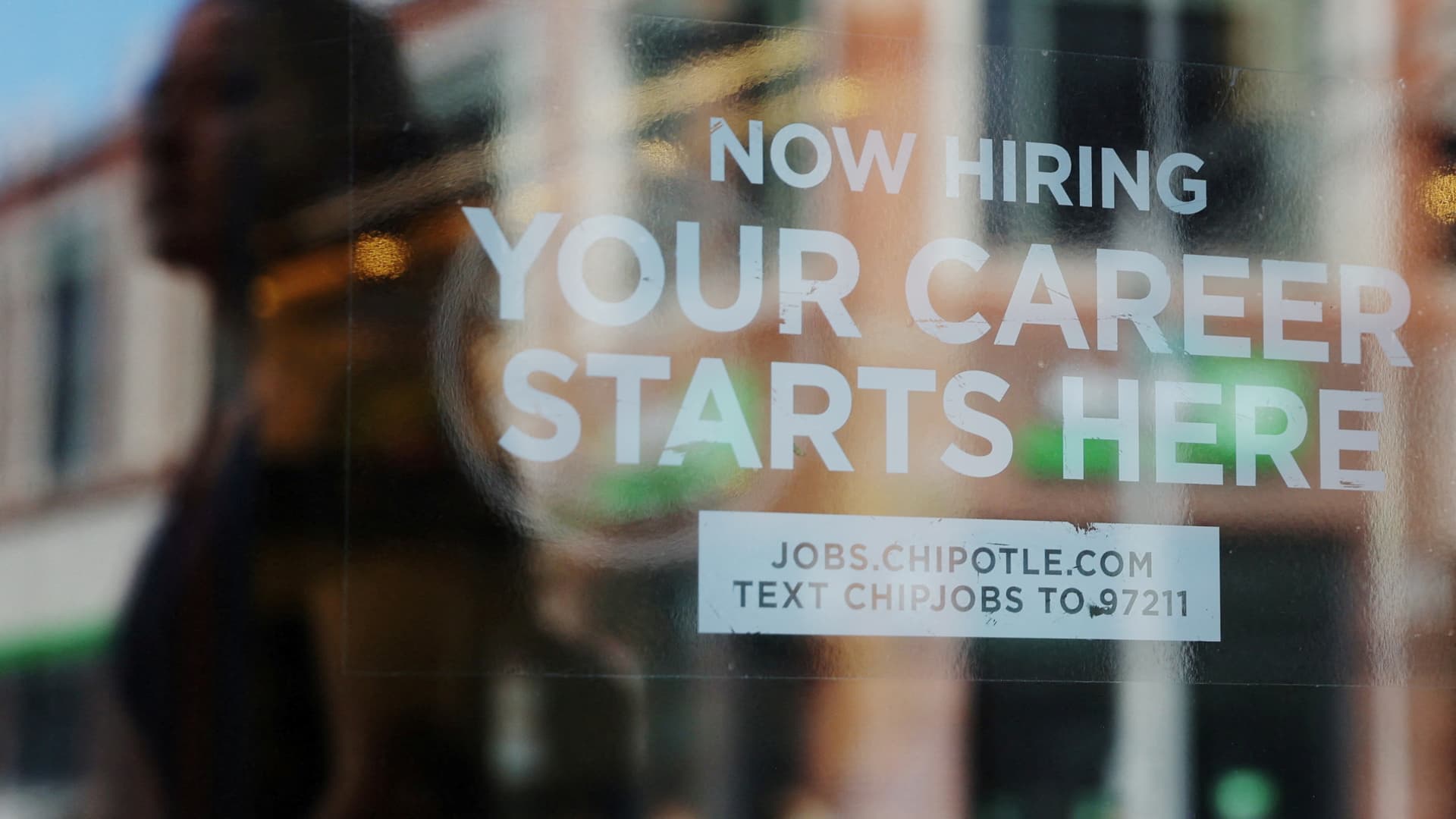A Chipotle restaurant advertises it is hiring in Cambridge, Massachusetts, August 28, 2023.
Brian Snyder | Reuters
This report is from today’s CNBC Daily Open, our new, international markets newsletter. CNBC Daily Open brings investors up to speed on everything they need to know, no matter where they are. Like what you see? You can subscribe here.
What you need to know today
The bottom line
The U.S. economy added more jobs than expected in August, but the overall unemployment rate rose. This may sound counterintuitive since it’s natural to assume an increase in the number of jobs will lead unemployment going down. But there’s a simple explanation for that.
By definition, the unemployment rate is the number of unemployed people (people without a job but are actively looking for one), divided by the labor force (the sum of people both employed and unemployed), expressed as a percentage.
If the unemployment rate goes up, that means the proportion of people looking for a job compared with the total labor force has grown. That’s straightforward enough. For the unemployment rate to go up even as there were 187,000 more jobs in August means there were more people who started looking for a job than people who secured one. The implication: The total labor force grew in August.
A growing labor force is a looser jobs market. That probably contributed to the lower-than-expected wage growth last month. As Bank of America U.S. economist Stephen Juneau wrote, “The broad message here seems to be that we are nearing full employment, with supply and demand coming more into balance.”
That will come as a relief to Federal Reserve officials worried about a hot jobs market contributing to inflation. Investors, too, cheered the jobs report. They think there’s a 93% chance the Fed will keep rates unchanged at its September meeting and a 65.3% chance at its November meeting, according to the CME FedWatch Tool. That’s up from 80% and 44.5% a week ago, respectively.
Major indexes rose in response to the jobs report as well. The S&P 500 climbed 0.18% Friday, giving it a 2.5% increase for the week — its best weekly performance since June. The Dow Jones Industrial Average added 0.33% to close 1.4% higher for the week. The Nasdaq Composite was essentially flat, but ended the week up 3.3%. That was both indexes’ best showing since July.
U.S. markets are closed today, so we’ll have to wait to see if they can sustain this momentum and defy September’s reputation as the worst month for stocks.
— CNBC’s Jeff Cox contributed to this report
Correction: This article has been updated to reflect the correct month of the jobs report.

